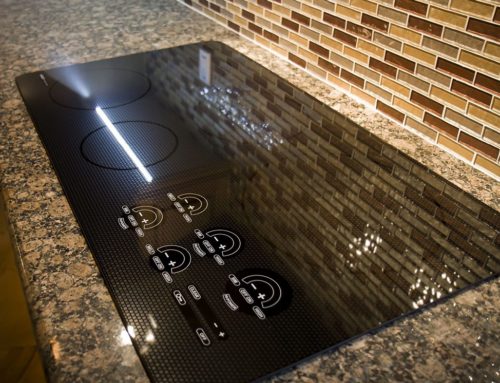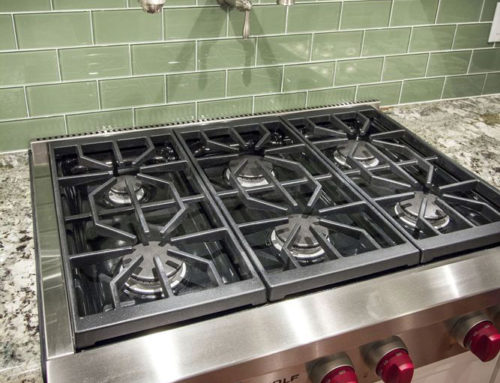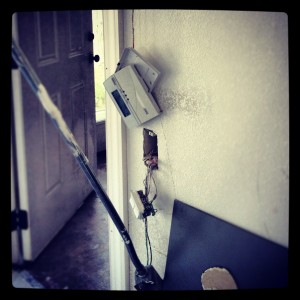
Chinese Drywall – Security Pad and Switch Left In Place – A good clue that the home was not 100% clean before it was rebuilt. Should you buy this Chinese drywall home? Not unless the discounted price is sufficient for you to completely remediate the home again.
In our previous article Should You Buy A Chinese Drywall Home In Tampa Bay? (Part 1 of 2), we shared our inspection observations regarding a Chinese drywall home that had been remediated.
Our client contacted us to perform a Chinese drywall inspection before they purchased the home. In that article we concluded that, if the accepted minimum standard for successful Chinese drywall remediation is 100% removal of all Chinese drywall (boards, debris, marks, and dust), then the subject property was, in fact, not actually remediated at all.
In this article we will address the culminating reason that solidified our conclusion why that home must ultimately be considered to have never been remediated.
The final item – and most damning piece of evidence (actually lack of evidence) regarding the remediation of the subject property – was a complete lack of any documentation what-so-ever!
Chinese Drywall Lawsuit Documentation vs Normal Documentation
Frequently when you say the word “documentation” in relation to Chinese drywall it is assumed you mean the requirements put forward by Judge Fallon’s Evidence Protection Order (EPO). In that order, Judge Fallon lays out very specific requirements that must be met by anyone who chooses to remediate their Chinese drywall home, and then plans to later pursue litigation to recover the costs of the rememediation.
Essentially, Judge Fallon says that if you do not collect evidence in accordance with the Order then you will be out of luck when you try to sue to recover damages in the event of a drywall settlement. His Order only legally applies to those cases within his jurisdiction, but it is generally accepted that anyone who is going to pursue litigation through a Chinese drywall lawsuit had better follow the requirements of the Order.
In the cases where we (Charter Bay Home Builders) collect Chinese drywall evidence in accordance with the Evidence Protection Order it results in literally thousands of photographs. As it relates to this article, documentation per the Evidence Protection Order is not what we’re talking about. We are simply talking about the ability to later demonstrate – prove – that a home was properly remediated, and that 100% of all Chinese drywall, and all impacted components, were removed from the home.
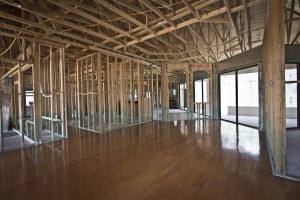
Chinese Drywall Documentation Photo Of Home Remediated By Charter Bay Home Builders – Not A Speck Of Chinese Drywall Dust Is Left. Should you buy a Chinese drywall home? If it was remediated like this, the answer is a resounding “YES”
One of the first questions I ask of anyone who is looking to buy a remediated Chinese drywall home is “Are there photos and/or video tours of the home prior to it being rebuilt?”. If there are no photos, videos, or independent environmental consultant reports (that contain photos prior to rebuild) that clearly show the home with all of the drywall and components removed (before rebuilding), then it raises a serious red flag!
Without photos or videos, it is nearly impossible to know whether or not the home was remediated properly. There are 1000 ways to do a remediation wrong, and only a couple ways to do it right. The nature of a remediation project is that it is very easy to do more harm than good. The subject property from our inspection is a good example. A great deal of time and money was spent in an effort to remediate that home, and solve it’s Chinese drywall problem. However, because the work was not done by an experienced Chinese drywall contractor, and the quality of the observable work and remediation protocols was so poor, the home must be considered to have never been remediated at all. In my opinion, every penny already spent was wasted and did nothing to fix the Chinese drywall problem.
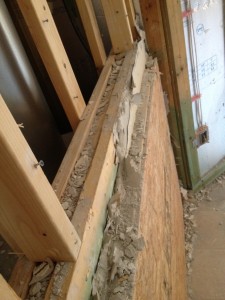
Chinese drywall demolition is extremely dirty. Dust, debris, and markings on components (all of which are in this photo) get everywhere. Every nook and cranny must be properly cleaned. Without documentation, it is impossible to know if a rebuilt Chinese drywall home has been cleaned properly.
How Do I Safely Buy A Chinese Drywall Home?
As the potential buyer of a home that had Chinese drywall, but was remediated without the need for EPO documentation, I would demand sufficient evidence of a proper remediation (as noted above) prior to closing on a sale. Unfortunately, on the subject property our client was told that no such documentation existed. In a property that had been so poorly remediated this is not surprising.
As the buyer of a home that has been remediated in accordance with the EPO requirements I would make the contract subject to the receipt and approval of a complete copy of the entire EPO package.
Finally, if the information you receive does not satisfy your concerns that a proper remediation was performed, you should hire an experienced Chinese drywall remediation contractor that also does Chinese drywall inspections. This inspection would be in addition to your normal home inspection. A normal home inspector is likely not going to pick up on some of the nuanced signs that would indicate whether a home was remediated properly, or wasn’t.
Once you buy a Chinese drywall house, there is a very good reason you will want this documentation. We address this point next from the perspective of the owner of a Chinese drywall home.
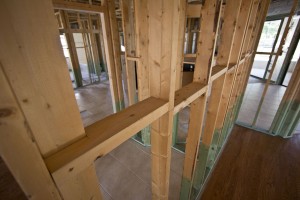
Chinese Drywall Documentation – This would pass any cleanliness standard. If you really wanted to, you could eat off of this framing. Not sure why you’d want to, but you could.
How Can I Sell My Chinese Drywall Home And Get The Most Money?
If you are the owner of a Chinese drywall home that is going to be remediated, but will not have evidence collected per the EPO, then you must still ensure proper documentation is gathered. Why do you need to bother with this if you are not going to be involved with a Chinese drywall lawsuit, and will not be doing the EPO? Three words – Return On Investment! In simple terms, sufficient documentation will yield you more money at the eventual sale of your home, and insufficient documentation will yield less.
Without documentation you will virtually guarantee that your home will sell at some discounted price below what other similar homes in your neighborhood will sell for. Once your home is remediated, the most important thing your future buyers will need to see are the photographs and video tours of the entire home that allow you to show that 100% of all Chinese drywall boards, pieces, marks, debris, dust, and effected components were removed from the home.
The documentation of your home does not have to be complicated. There are three photos attached to this article that show a home remediated by Charter Bay Home Builders. If you were interested in purchasing this home, and these photos were all you were given, you would already be fairly certain that the home was rid of 100% of all Chinese drywall. We provide our clients with a great deal more documentation than just these three photos, but the three photos alone paint a very clear picture of how the home was remediated, and what you as a homeowner with Chinese drywall should be inspecting and documenting. Note that I am not actually suggesting that you need to be doing the documentation yourself. These tasks should be performed by your Chinese drywall remediation contractor.
Now, back to the idea of the return on investment of your remediation. I am frequently asked whether a properly remediated home will still have a negative stigma attached to it once the remediation is complete. Ultimately the owners want to know if the value of their home will be equal to other non-Chinese drywall homes in their neighborhoods. When remediated properly, a strong argument can be made that the home should actually have more value when compared to an identical home (same size, age, components, etc) in that same neighborhood, not less! A good realtor who is educated in Chinese drywall, and Chinese drywall remediation, should be able to demonstrate additional value, and thus yield a better sales price on your home. Here’s why:
- Once remediated properly – and documented – all traces and negative impacts from the prior Chinese drywall are completely removed from the home. In my mind, and again the caveat is that the home is properly remediated, Chinese drywall (although more complex) is really no different than a home with a bad roof. Once the old roof is removed and replaced, the home no longer has a problem.
- For all intents and purposes, in comparison to other homes in the neighborhood, a remediated home has been completely updated with all new carpet, new paint, new air conditioners (we replace the entire HVAC system), new electrical fixtures and wiring, new plumbing fixtures, and the like. All of these have value in comparison to another home where these items are all 5-10 years old. Again, the new roof example is a good comparison. Not only did the new roof solve the old leaking problems, but once a new roof was installed it actually added value to the home.
- Also in comparison to other homes in the neighborhood, a remediated Chinese drywall home has been brought up to current building code. This means the electrical wiring, HVAC system, etc are all to new code. Again, this has value when compared to the other homes in the neighborhood.
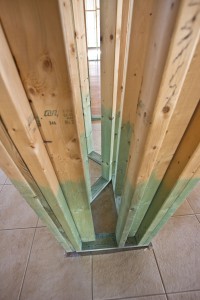
Chinese Drywall Photo Documentation – There are thousands of places for dust and debris to hide if remediation is done improperly, but not in this house.
So, in summary, yes, it is my opinion that the combination of a properly remediated house, compelling documentation, and a top-notch educated real estate agent can mean that a home that previously had Chinese drywall actually has more value on the market than other similar homes. However, if the home has been remediated incorrectly, and/or documented insufficiently, then it has the opposite effect on the value of the property (and the ability to sell it).
If you are already an owner of a home with Chinese drywall, how do you ensure your contractor is up to the task?
How Do I Find A Chinese Drywall Contractor?
Here is a list of things to consider:
- Do your research. By becoming knowledgeable about Chinese drywall you reduce your chances of choosing a contractor that will harm you, rather than help you. It is likely that the bank who owned the subject property – more specifically the employee of the bank that made the decision to remediate – had no idea how to properly remediate a Chinese drywall home.
- Choose a contractor that specializes in Chinese drywall remediation. This is not something that just any contractor can do correctly.
- Choose a contractor that can demonstrate a high level of organization. The remediation of a Chinese drywall home is several multitudes of complexity more difficult than it actually was to build the home the first time. It requires a great deal of coordination and organization. As an example, at Charter Bay Home Builders every single step in the process is outlined within a series of electronic To Do lists. Each day of the process the list template for that days necessary activities is generated and then followed to ensure all tasks are performed, and that each task is performed to the exact standards necessary. No detail is left to chance. At no point will there be an “Oops, we forgot to do that” moment. To bring a home through to the Air-Out Phase (ready for rebuilding) Charter Bay uses 34 distinct electronic To Do lists, which contain over 550 specific Action-Items. These action-items cover every detail, from something as simple as putting a blue-tape “X” on all sliding glass doors to keep someone from walking into them with a 2×4, to the specific actions necessary to ensure every detail of documentation for an EPO is followed. These To Do lists, along with interactive schedules, and all facets of the project being available online, ensure that a Charter Bay Chinese drywall remediation is successful. With Chinese drywall remediation, you cannot be too organized.
- If possible, choose a contractor that has experience with new home construction, remodeling, and remediation. Skill sets from all three are very valuable in a Chinese drywall remediation.
- Check references! Take the time to call your contractor’s references. This is one of the most important steps to take in the entire process.
For more information on How To Hire A Chinese Drywall Contractor take a look at this video from our Chinese Drywall Video Series:
Should I Buy A Chinese Drywall Home?
So, this brings us back to the original question posed in the title of this article – Should you buy a home that has, or previously had, Chinese drywall? Without trying to sound like a commercial for our Chinese drywall remediation services, if the home was (or is going to be) remediated to a level in accordance with the stringent remediation and documentation standards set forth by Charter Bay Home Builders – as evidenced by observable conditions, and seller-provided documentation – then the answer is a resounding “YES”. As a buyer these homes represent some great opportunities.
In summary, as you search the Tampa Bay market for a home to buy, a properly remediated Chinese drywall home may be an excellent option for your and your family. The numerous upgrades could mean that a Chinese drywall home represents one of the best values on the market so keep your eyes open for the opportunity if it arises.
 Tampa Chinese Drywall Video Series – The video series walks step-by-step through an entire Chinese drywall remediation project. It also covers other issues homeowners should consider before beginning a remediation project.
Tampa Chinese Drywall Video Series – The video series walks step-by-step through an entire Chinese drywall remediation project. It also covers other issues homeowners should consider before beginning a remediation project.
 Tampa Chinese Drywall Blog – The blog focusses on those issues directly relevant to any homeowner with Chinese drywall.
Tampa Chinese Drywall Blog – The blog focusses on those issues directly relevant to any homeowner with Chinese drywall.
 Tampa Chinese Drywall Twitter Feed– This twitter feed also focuses on those issue directly relevant to homeowners with Chinese drywall. The blog contains more in-depth information while the twitter feed contains the more timely issues relating to Chinese drywall.
Tampa Chinese Drywall Twitter Feed– This twitter feed also focuses on those issue directly relevant to homeowners with Chinese drywall. The blog contains more in-depth information while the twitter feed contains the more timely issues relating to Chinese drywall.
 Charter Bay Home Builders is a full-service Tampa Chinese Drywall Contractor and Remediator, Custom Home Builder, and Remodeler working throughout the greater Tampa Bay area including Hillsborough, Pinellas, Pasco, Hernando, Manatee, and Sarasota. Charter Bay can help with your Chinese Drywall Problems and Remediation, Custom Home Building, Additions, Kitchen Remodeling, Bath Remodeling, Renovation, and Remodeling needs. In addition, as one of the few Tampa custom home builders, or remodelers, with multiple green building and green remodeling certifications (FGBC Certifying Agent and NAHB Certified Green Building Professional), Charter Bay can also assist those clients who want green features and sustainable building practices incorporated into their projects. Visit our website – www.CharterBayHomes.com – today to learn how “The Charter Bay Way” delivers: “Yesterday’s Values • Today’s Technology • Tomorrow’s Vision” (813) 357-9030 (CBC1255041)
Charter Bay Home Builders is a full-service Tampa Chinese Drywall Contractor and Remediator, Custom Home Builder, and Remodeler working throughout the greater Tampa Bay area including Hillsborough, Pinellas, Pasco, Hernando, Manatee, and Sarasota. Charter Bay can help with your Chinese Drywall Problems and Remediation, Custom Home Building, Additions, Kitchen Remodeling, Bath Remodeling, Renovation, and Remodeling needs. In addition, as one of the few Tampa custom home builders, or remodelers, with multiple green building and green remodeling certifications (FGBC Certifying Agent and NAHB Certified Green Building Professional), Charter Bay can also assist those clients who want green features and sustainable building practices incorporated into their projects. Visit our website – www.CharterBayHomes.com – today to learn how “The Charter Bay Way” delivers: “Yesterday’s Values • Today’s Technology • Tomorrow’s Vision” (813) 357-9030 (CBC1255041)
Disclaimer: This article, and anything provided through this article – or this site – does not constitute legal advice. Nothing from this article should be construed as a source of legal advice. You should not rely or act upon the contents of this article, or this site, without seeking advice from your own attorney.


